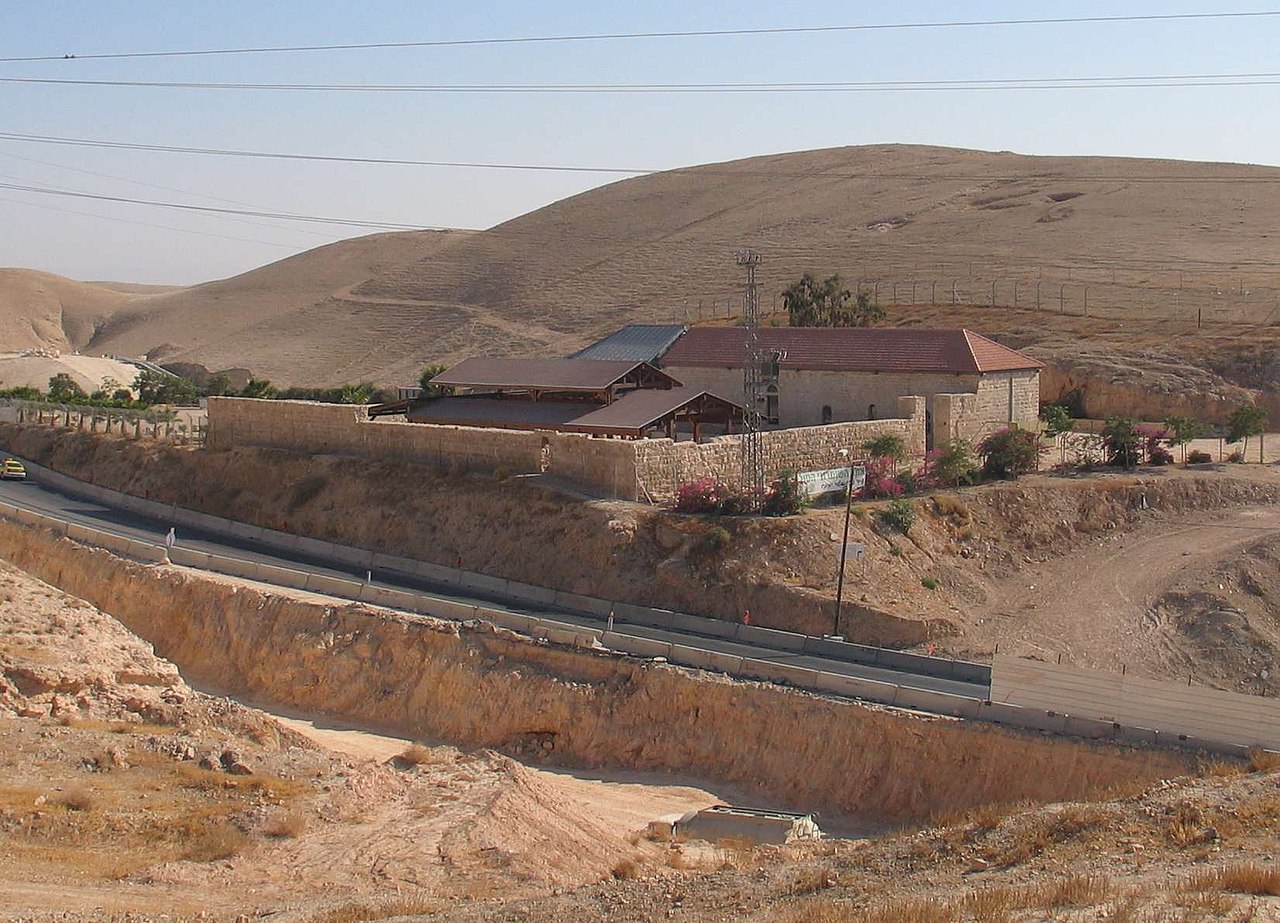So many times, on our way back to Jerusalem after spending a few days at the Dead Sea or in Eilat, we passed the sign directing travelers to the Good Samaritan Inn and Mosaic Museum. I often wanted to make the slight detour to visit the site but was prevented by pressure of time or commitments.
However, on our last return journey we found the time to enter the area belonging to Israel’s Nature and Parks Authority where the building is situated. Our detour was well worth the effort, as we were able to tour the site containing many beautiful ancient mosaics, some of them situated in the open air and others housed in the building originally erected by the British Mandate authorities as a police station on the route between Jerusalem and pilgrimage sites at the Jordan river. The red-colored rock of the region has given it its name, Ma’aleh Adumim, and the now-destroyed Crusader fortress that once dominated the crest was known as Castrum Rouge.
The parable of the Good Samaritan in the New Testament serves to illustrate the message that even someone from a lower class, as the Samaritans were considered to be then, could be more compassionate and charitable than a member of a higher class, such as priests or Levites, whose members refrained from helping a traveler who had been attacked and left at the roadside. The actual site of the event isn’t known, but archaeological excavations have shown that the spot where the museum is located dates back to a road station from the Second Temple period used by pilgrims to Jerusalem from Galilee and Gilead, as well as an inn from the Byzantine period serving Christian pilgrims. Samaritans separated themselves from Jews in the late First Temple period, though their religion also stems from the Torah and in many respects is akin to Judaism.
The art of mosaic evolved in the Greek world in the fourth century B.C.E., reaching the Land of Israel during the Hellenistic period, continuing to develop there subsequently. Producing a mosaic involved skill and teamwork, with builders who produced several preliminary layers of foundations as well as stonecutters and artists. Cutting tesserae was difficult and tedious, and paving a medium-sized church required more than two million of them. Samaritan synagogues differed from Jewish ones in several respects, though their mosaic floors were similar, and both differed from those found in churches.
Excavations have led to the discovery of many elaborate and beautiful mosaics in many places in Israel. The mosaics in the Good Samaritan Inn and Museum, which have been assembled from sites in Judea, Samaria and Gaza, date back to the Hellenistic and Roman periods, as well as the Byzantine (Talmudic) and Crusader periods. The intricate designs served as floors of public buildings, such as bath-houses, synagogues and churches, as well as private residences of wealthy individuals. Some of the mosaics show intricate abstract patterns while others depict animals and birds. One, taken from the synagogue at Gaza, even shows King David playing the lyre and wearing the robe of a Byzantine emperor, with a lion-cub, giraffe and snake listening to him. Some of the mosaics bear inscriptions or fragments of inscriptions, praising God or seeking blessings for donors or benefactors. Whatever their purpose, they serve as reminders of that most noble of human endeavors – the perpetual yearning for beauty and artistic expression.
Republished from San Diego Jewish World


























